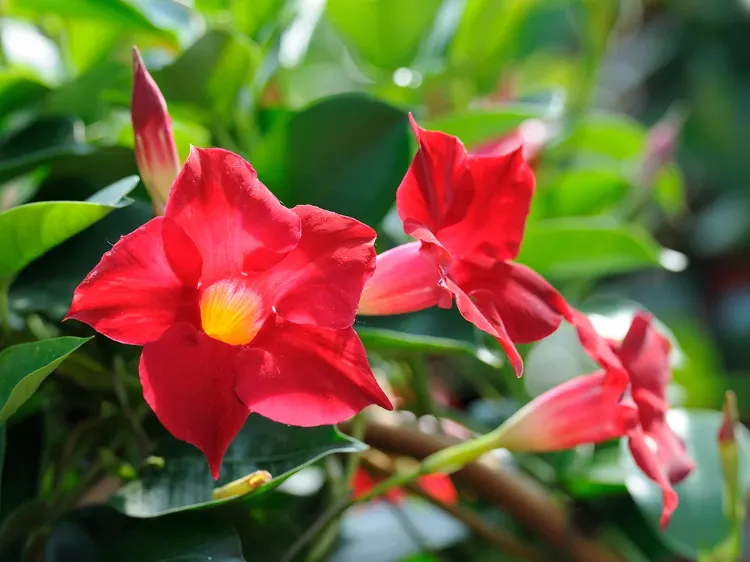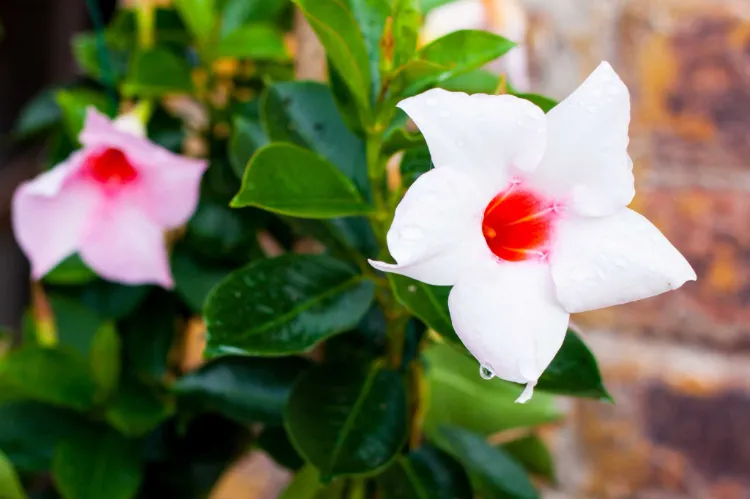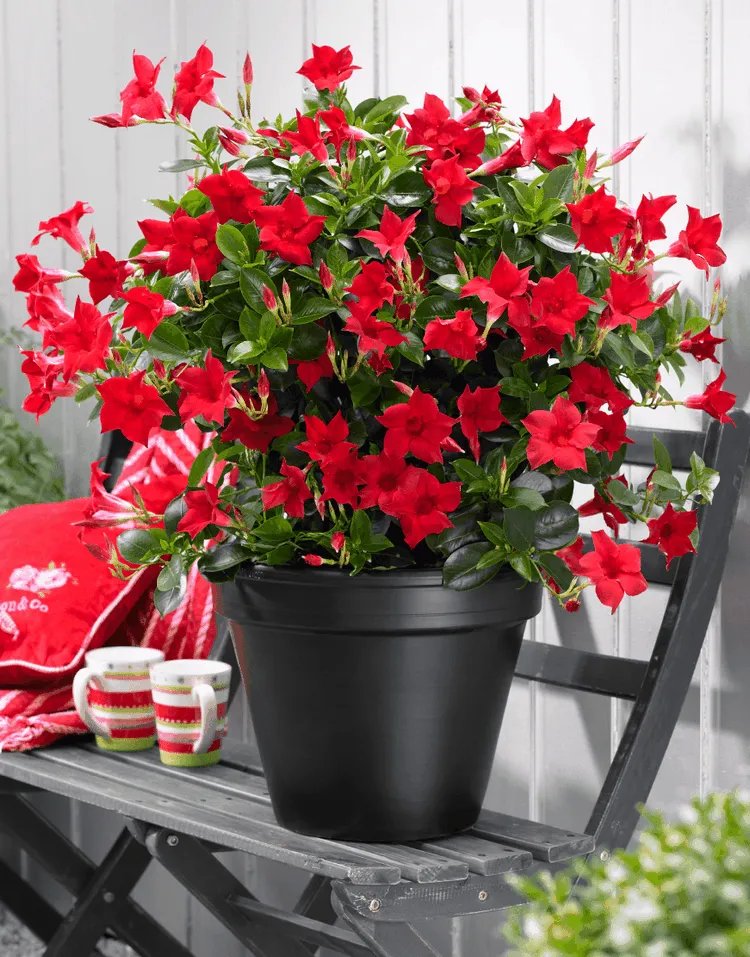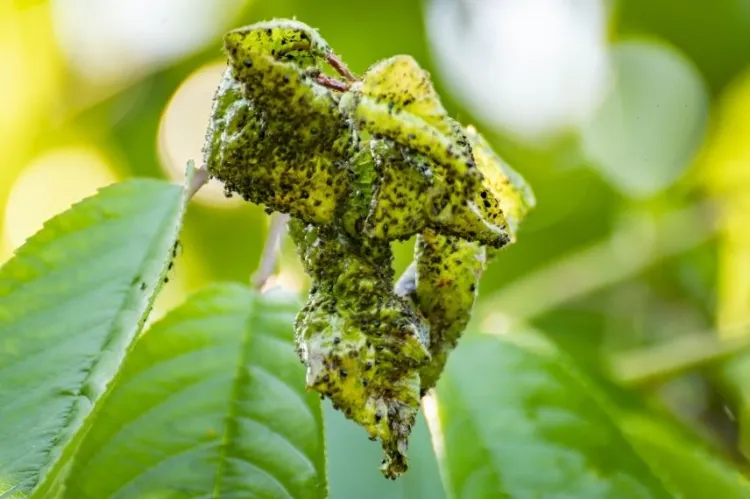When to bring Dipladenia indoors in winter and why? Soft and majestic, does it require special attention in winter? Where to store it during the cold period? Does Dipladenia lose its leaves in winter? What special care does the flower need? Deavita’s expert editorial team answers all your questions!
When to Bring Dipladenia Indoors in Winter?
Dipladenias are tropical plants that take center stage in beautiful hanging baskets, trellises and fences. The flower has a long growing season which extends from at least April to October. But in winter, the flower will need special care. Originating from Brazil, its roots cannot tolerate negative temperatures. That is why this enchanting flower must be well protected from frost.
Dipladenia can be moved indoors as soon as the temperature drops to around 46F/8°C. Before moving the flower, it is important to adjust its height and width. This way you will save space during the winter and the fall pruning will produce new shoots which you can enjoy in the spring in the form of new flowers. Use gloves when pruning, as the flower secretes a sap that irritates the skin.
Also read: Can You Prune Rhododendron in Fall? When? How to Prepare It for Winter?
How to Store Dipladenia During Winter?
To survive the winter without difficulty, Dipladenia needs light, a cool winter garden or a greenhouse. This delicate flower needs sunlight throughout the year, and this need is even more pronounced in winter. Forget the garage or basement as an alternative location! Give the plant complete rest over winter and keep temperatures between -53F/8-12C. If you place it in a garden greenhouse, be sure to provide a frost detector, because if temperatures are too high, the flower may not bloom at all the following year.
Also read: How to Overwinter Geraniums without Soil?
Does Dipladenia Lose Its Leaves in Winter?
Dipladenia is a flower that must adapt to the climate as the seasons go by. It may take some time to get used to the new environment. This is why the flower is likely to lose some of its leaves in fall and winter. You have to be patient until spring, when the first buds appear. Remove dead leaves and add fertilizer to stimulate growth. Does Dipladenia lose its leaves in spring? If so, the plant is probably exposed to draughts and needs to be relocated.
Also read: Dipladenia Has Yellow Leaves: What Are the Reasons and Solutions? + Tips for Vigorous Blooming
How to Care for the Flower in Winter?
Caring for Dipladenia in winter ensures its overall health and successful flowering all year round! We encourage you to add fertilizer and water at regular intervals. Do not leave water in the saucer, as the flower does not like excess humidity at all.
If you notice white spots on the plant’s leaves, spray them from time to time with non-calcareous rainwater as a preventive measure. If you notice new shoots appearing during the winter, don’t worry, but take extra care of them, as they are more fragile and tender, especially when exposed to the cold. So be gentle and careful with them! When the time comes to bring Dipladenia out of winter storage, do so gently and gradually.
Also read: Overwintering Mandevilla: This Is How to Care for Laxa, Splendens and Sanderi Varieties in Fall
How to Fight Pests in the Wintering Place?
Potted plants and more fragile plants present a significant risk of parasitic infestation during the winter season due to the dryness of the air and the absence of natural parasites. This is why mites and mealybugs take advantage of this time of year! How to control unwanted guests and prevent infection?
Monitor the overwintering site and keep humidity levels high by spraying with a humidifier or low-calcium water. If infestation has already occurred, treat immediately with a pesticide. Soapy water is also an economical and quick solution for pest control.
Also read: Overwinter Strawberries Outdoors and in Containers





